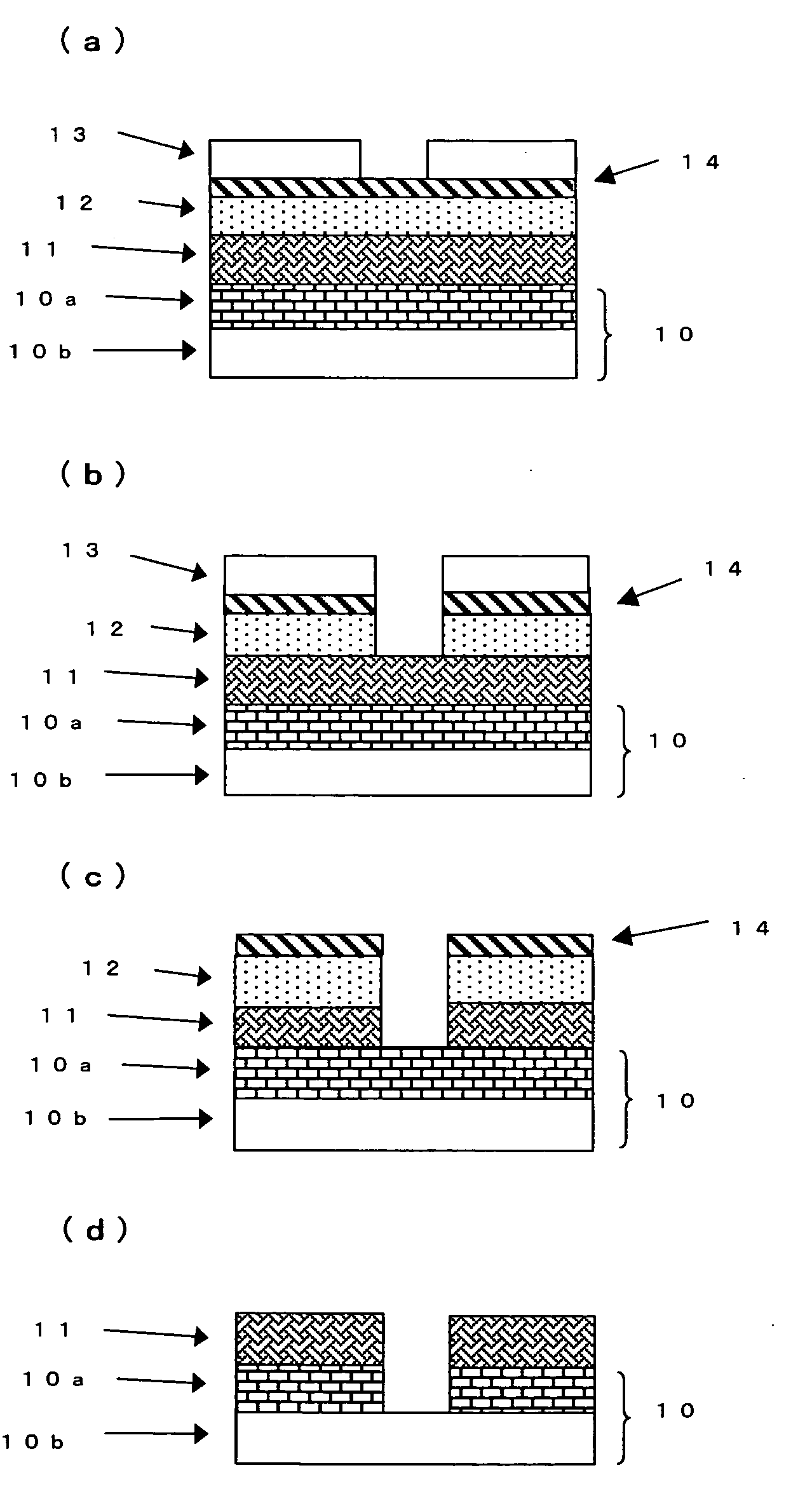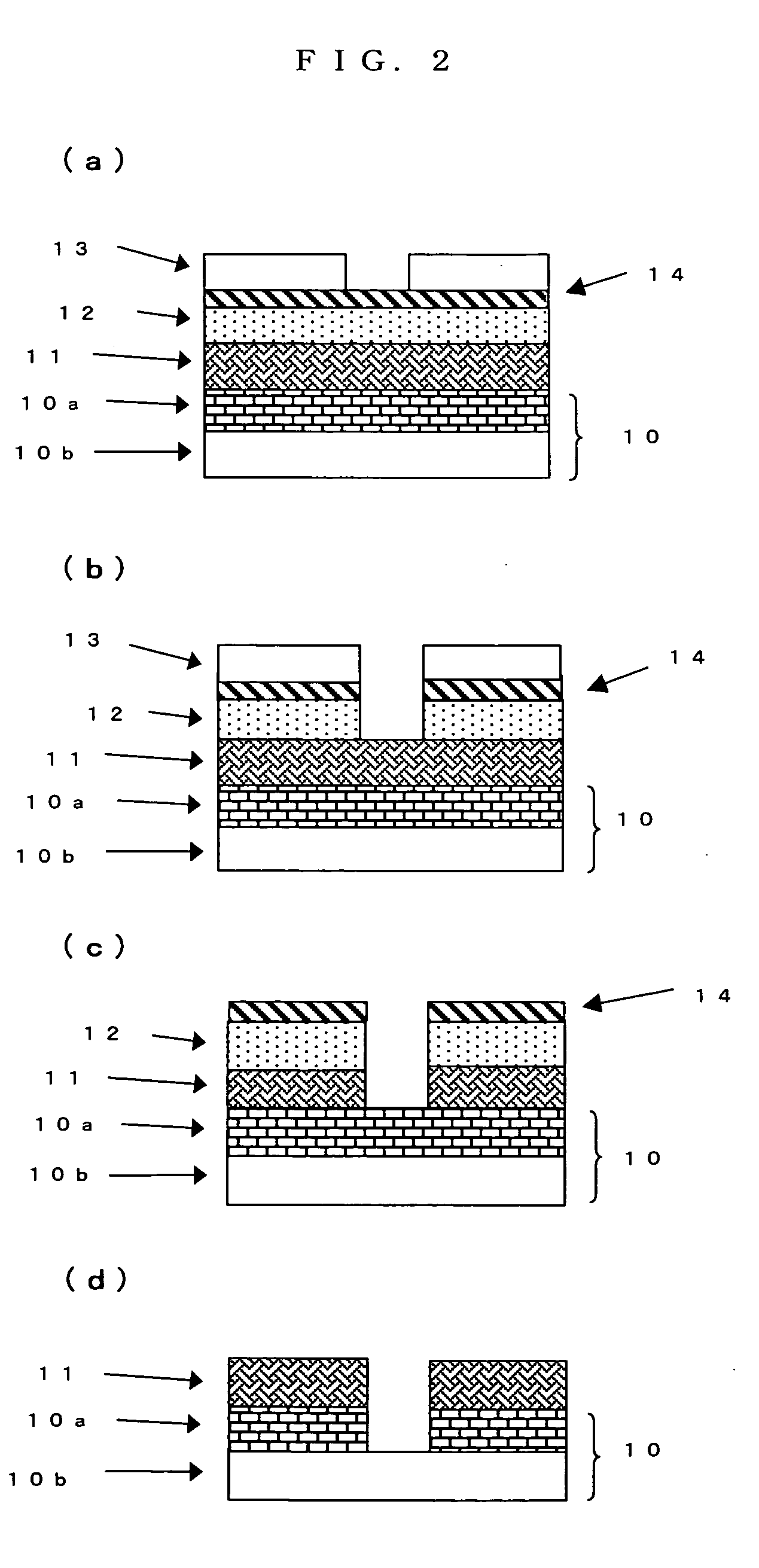Rework process for photoresist film
a photoresist film and rework process technology, applied in the field of rework process of photoresist film, can solve the problems of wasting time and manpower for producing the substrate, unable to form a resist pattern, and high cost, and achieves the effect of reducing cost, reducing time and manpower, and high yield
- Summary
- Abstract
- Description
- Claims
- Application Information
AI Technical Summary
Benefits of technology
Problems solved by technology
Method used
Image
Examples
example 1
[Preparation of Silicone Resin Film Composition]
[0189] In a 3000 ml glass flask, 1400 g of ethanol, 700 g of pure water, and 50 g of aqueous solution of 25 mass % tetramethylammonium hydroxide were placed, and stirred. To this mixture, a mixture of 139 g of 2-(3,4-epoxycyclohexyl)ethyl trimethoxy silane and 32 g of phenyl trimethoxy silane was added dropwise at a liquid temperature of 40 degrees C. After that, the solution was stirred for 2 hours at 40 degrees C. After the reaction finished, the reaction was quenched by adding 35 g of acetic acid, and ethanol was removed under a reduced pressure. To thus-obtained solution, 2000 ml of ethyl acetate was added and a water layer was separated. An organic layer was washed twice with ultrapure water. To this contents, 600 g of propylene glycol monomethyl ether acetate (PGMEA) was added, and the contents were heated up to a liquid temperature of 40 degrees C. under a reduced pressure to give Polymer 1.
[0190] Mass-average molecular weight...
PUM
| Property | Measurement | Unit |
|---|---|---|
| size | aaaaa | aaaaa |
| wavelength | aaaaa | aaaaa |
| wavelength | aaaaa | aaaaa |
Abstract
Description
Claims
Application Information
 Login to View More
Login to View More - R&D
- Intellectual Property
- Life Sciences
- Materials
- Tech Scout
- Unparalleled Data Quality
- Higher Quality Content
- 60% Fewer Hallucinations
Browse by: Latest US Patents, China's latest patents, Technical Efficacy Thesaurus, Application Domain, Technology Topic, Popular Technical Reports.
© 2025 PatSnap. All rights reserved.Legal|Privacy policy|Modern Slavery Act Transparency Statement|Sitemap|About US| Contact US: help@patsnap.com



